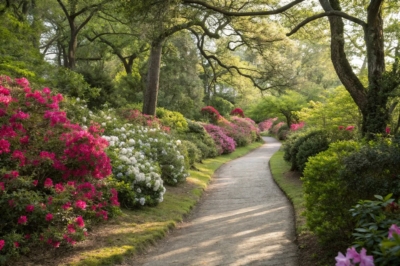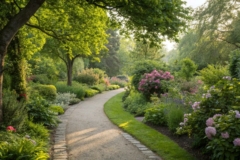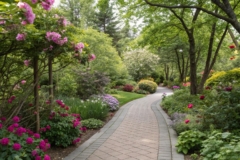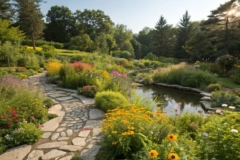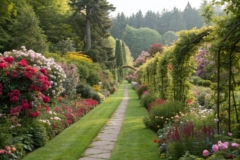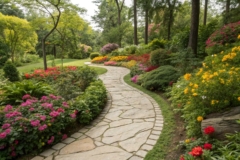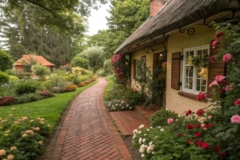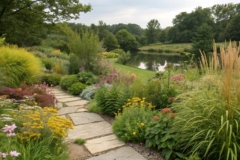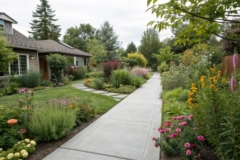1. Ground Cover Magic
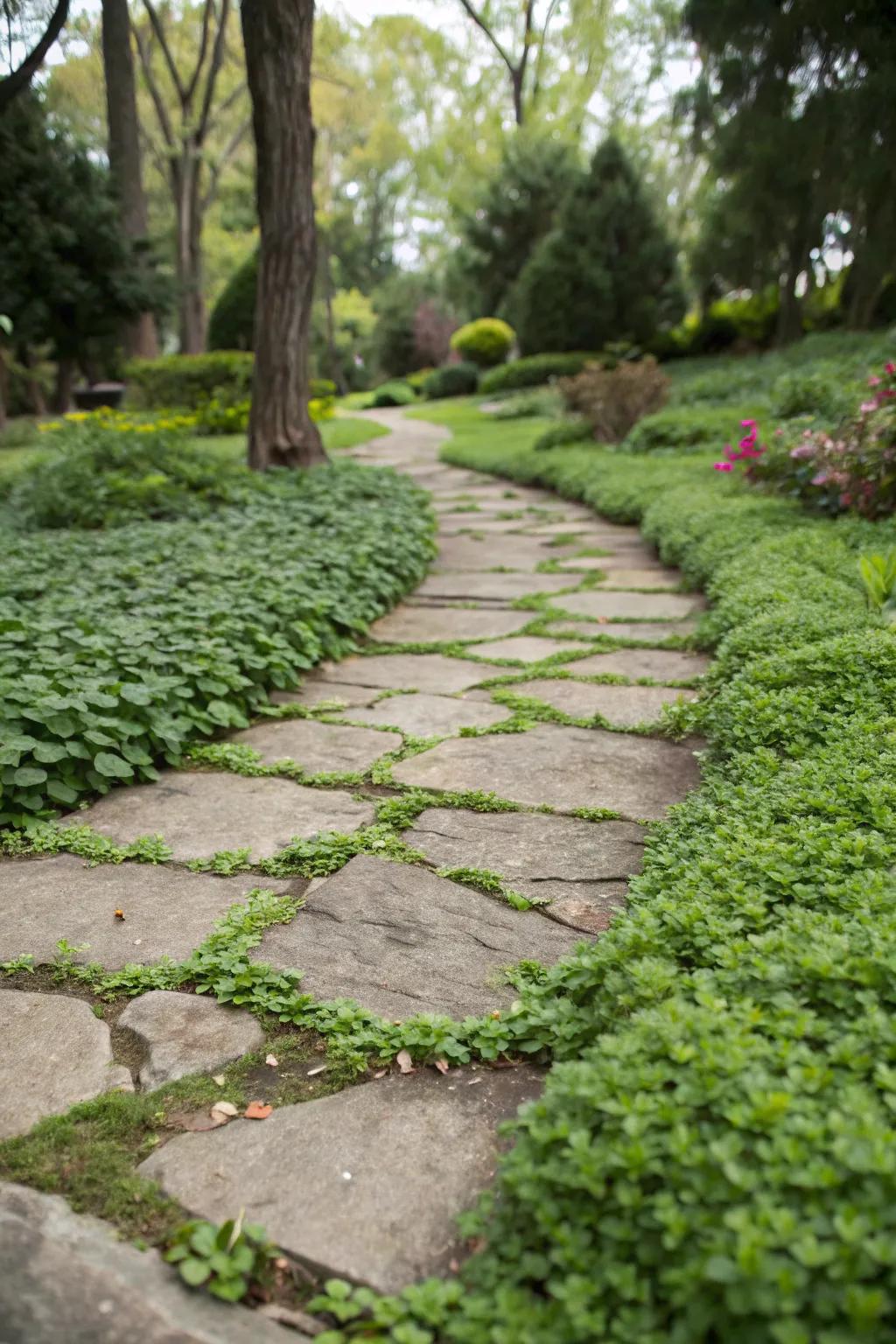
Use ground cover plants between stones for a seamless, living carpet effect. I adore how these plants soften the stone edges and add an extra layer of texture to my pathways.
Some handy options:
- Creeping Thyme Seeds: Cultivate lush, aromatic pathways with creeping thyme seeds, adding color and fragrance to your garden.
- Drought-Tolerant Ground Cover Mix: Enhance your walkway’s beauty with an easy-care, drought-tolerant ground cover seed mix.
- Perennial Ground Cover Plants: Add year-round greenery to your pathways with low-maintenance perennial ground cover plants.
2. Stone Pathway Elegance

A stone pathway can add timeless elegance to your garden, using a mix of large and small stones to create texture. I love how stones naturally guide you through the garden, creating a journey with each step.
Might be a good match:
- Natural Stone Stepping Stones: Enhance your garden’s charm with natural stone, creating a beautiful and inviting pathway.
- Garden Pathway Edging: Define your stone pathway with elegant edging, adding structure and style to your garden.
- Outdoor Pathway Lighting: Illuminate your stone pathway with ambient lighting, enhancing safety and aesthetic during evenings.
3. Clever Use of Mulch
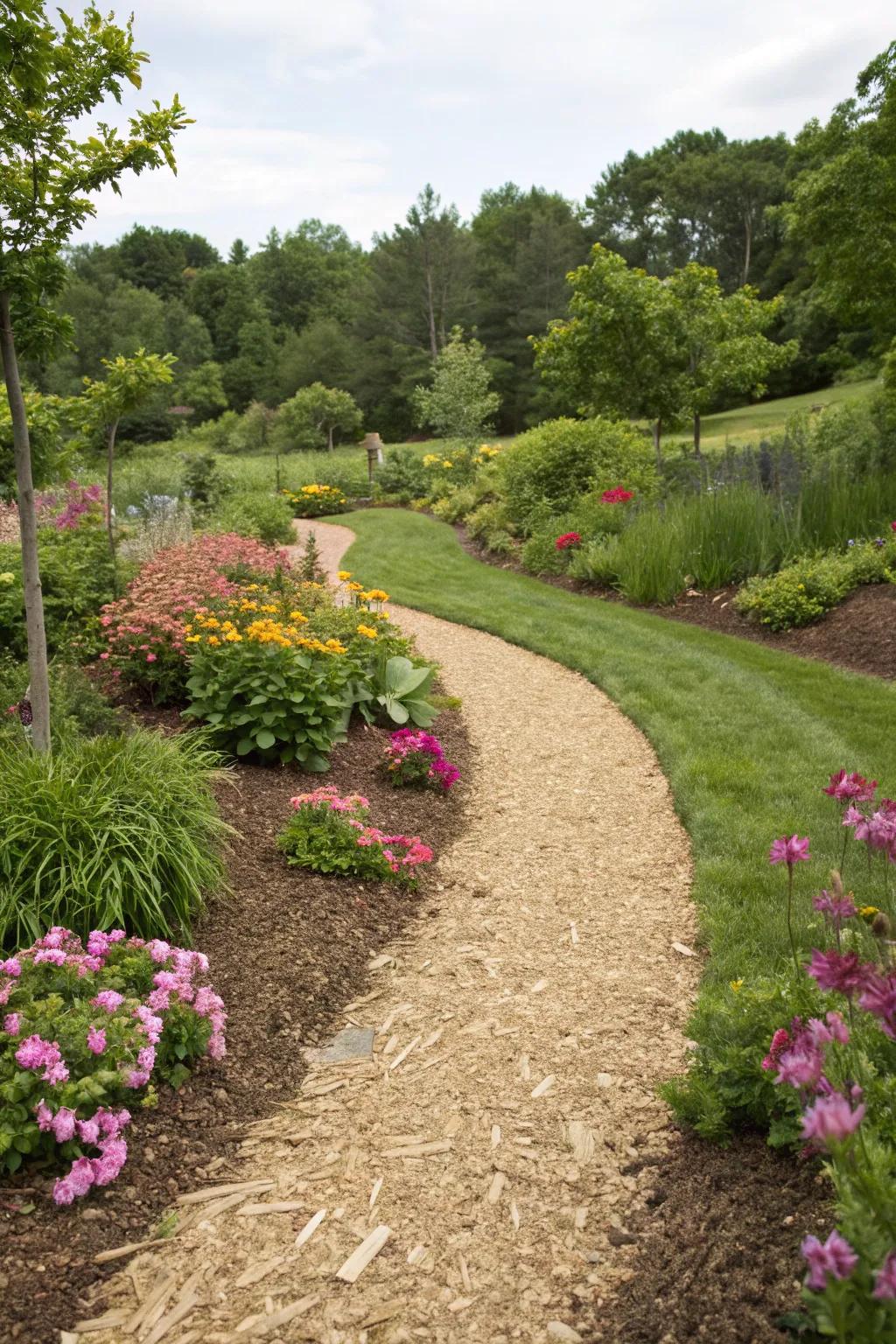
A mulch path offers a soft, natural look and is easy to install. In my garden, mulch paths blend effortlessly with the surroundings, making them a go-to for low-impact design.
You might like:
- Organic Hardwood Mulch: Enhance your garden paths with this organic mulch, providing a natural and sustainable look.
- Landscape Fabric: Use landscape fabric under mulch to prevent weeds and maintain a clean walkway appearance.
- Garden Edging Border: Define your mulch path edges elegantly with durable garden edging for a tidy finish.
4. Personalized Memory Path
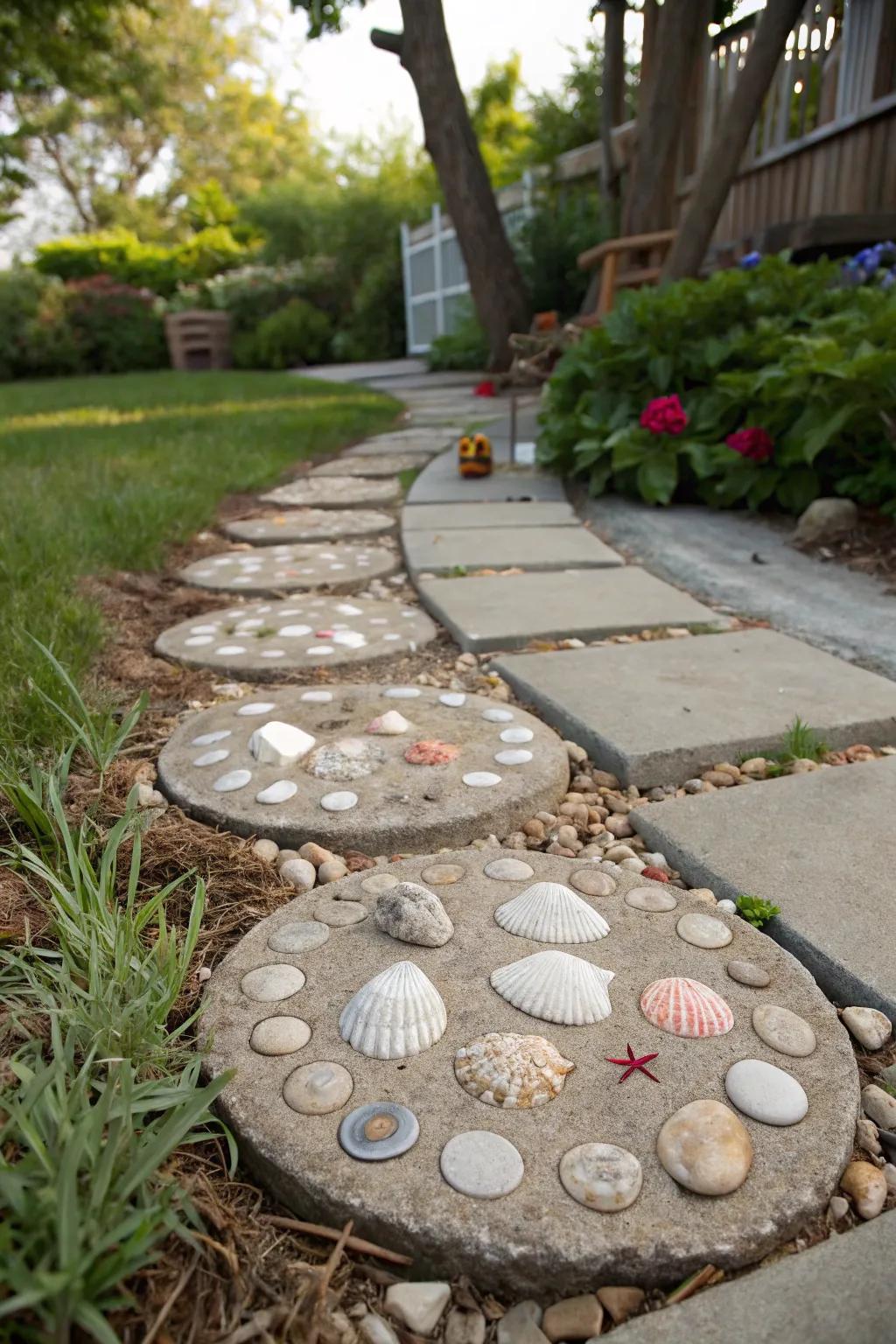
Incorporate personal treasures like seashells or stones into stepping stones for a path filled with memories. In my backyard, these personalized elements spark joy and nostalgia every time I walk by.
Maybe worth checking out:
- Concrete Stepping Stone Mold: Create custom stepping stones effortlessly for a unique backyard path filled with personal treasures.
- Decorative Garden Pebbles: Enhance your path’s charm with vibrant pebbles, adding color and texture to every step.
- Seashell Craft Kit: Incorporate beautiful seashells into your path for a coastal touch that evokes cherished memories.
5. Stepping Stone Simplicity
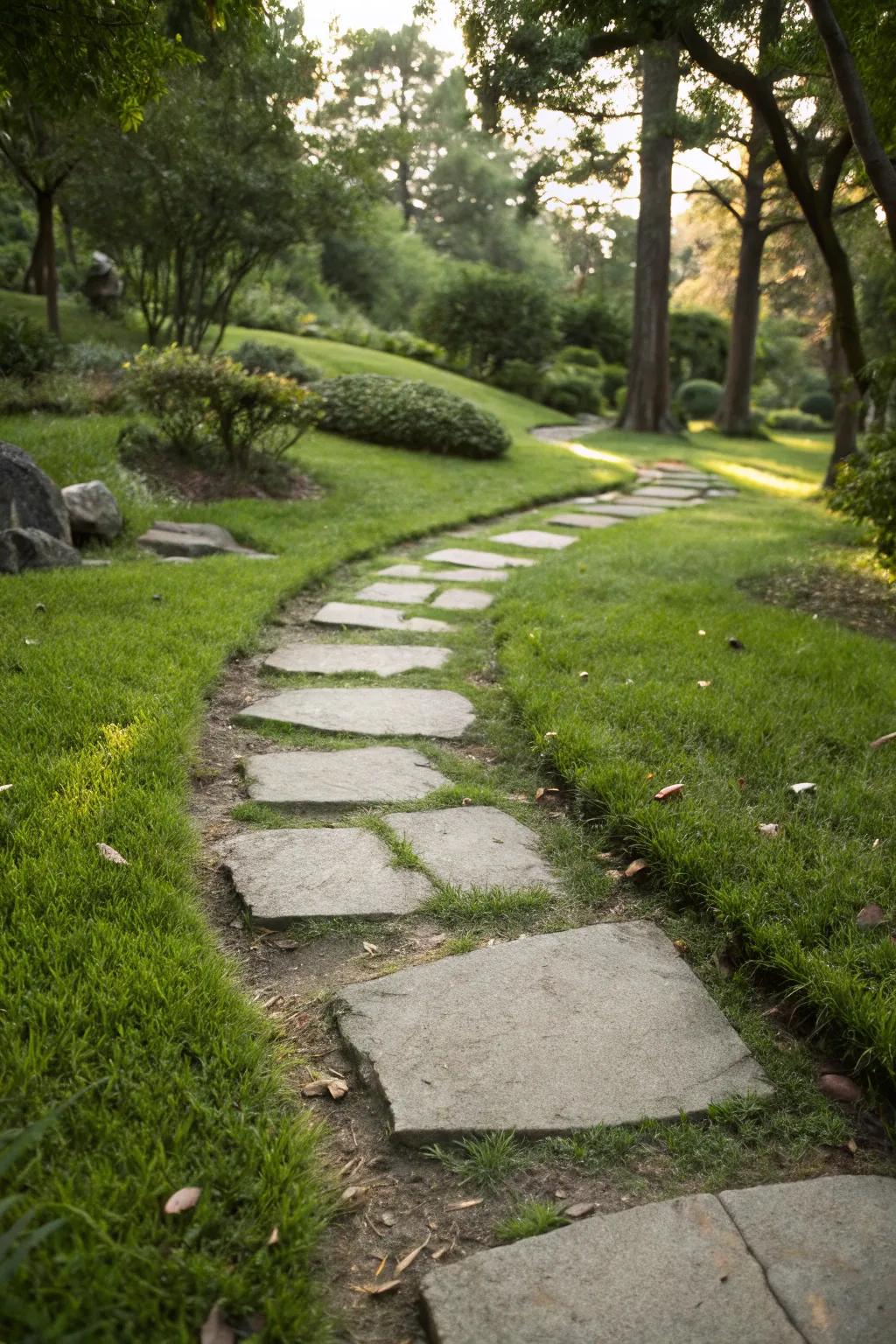
Lay out stepping stones for a quick and easy path solution. They provide a minimalist look while allowing grass or ground cover to peek through, which I find delightfully charming.
A few things you might like:
- Natural Stone Stepping Stones: Upgrade your garden with natural stone stepping stones for a charming, minimalist pathway.
- Garden Pathway Edging: Define your stepping stone path with easy-to-install garden pathway edging.
- Ground Cover Plants Seeds: Enhance your pathway’s charm by planting ground cover plants between the stones.
6. Mix and Match Materials
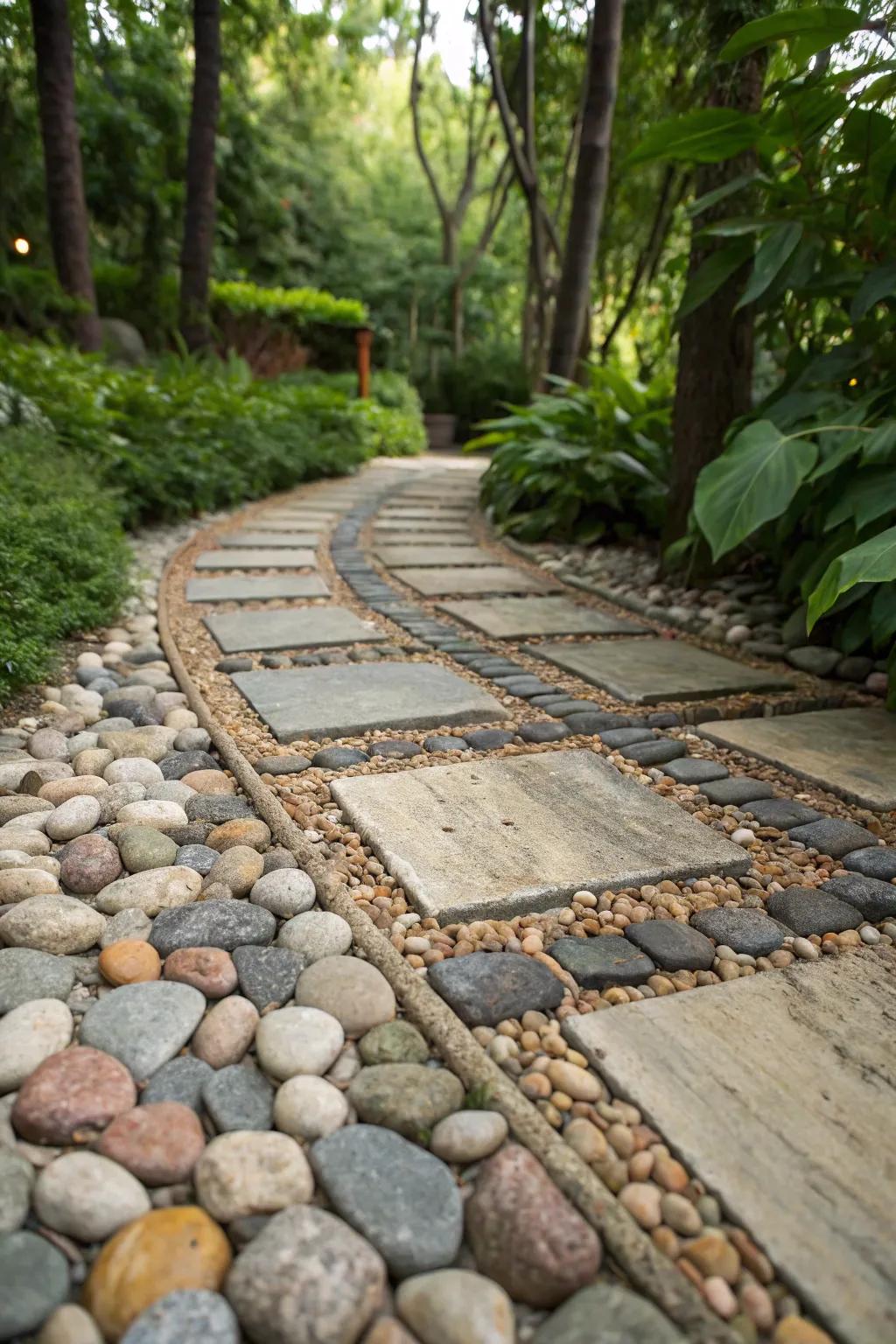
Combine stones and pebbles to create a visually intriguing walkway that captures attention. In my own garden, this mix adds depth and interest, inviting you to explore different areas.
A few suggestions:
- Decorative Garden Pebbles: Enhance your garden’s charm with decorative pebbles, perfect for adding texture and interest.
- Natural Stone Pavers: Create captivating pathways with natural stone pavers, combining elegance and durability in your garden.
- Garden Edging for Pathways: Define your walkway beautifully with durable garden edging, ensuring a neat, attractive look.
7. Textured Sand and Stone
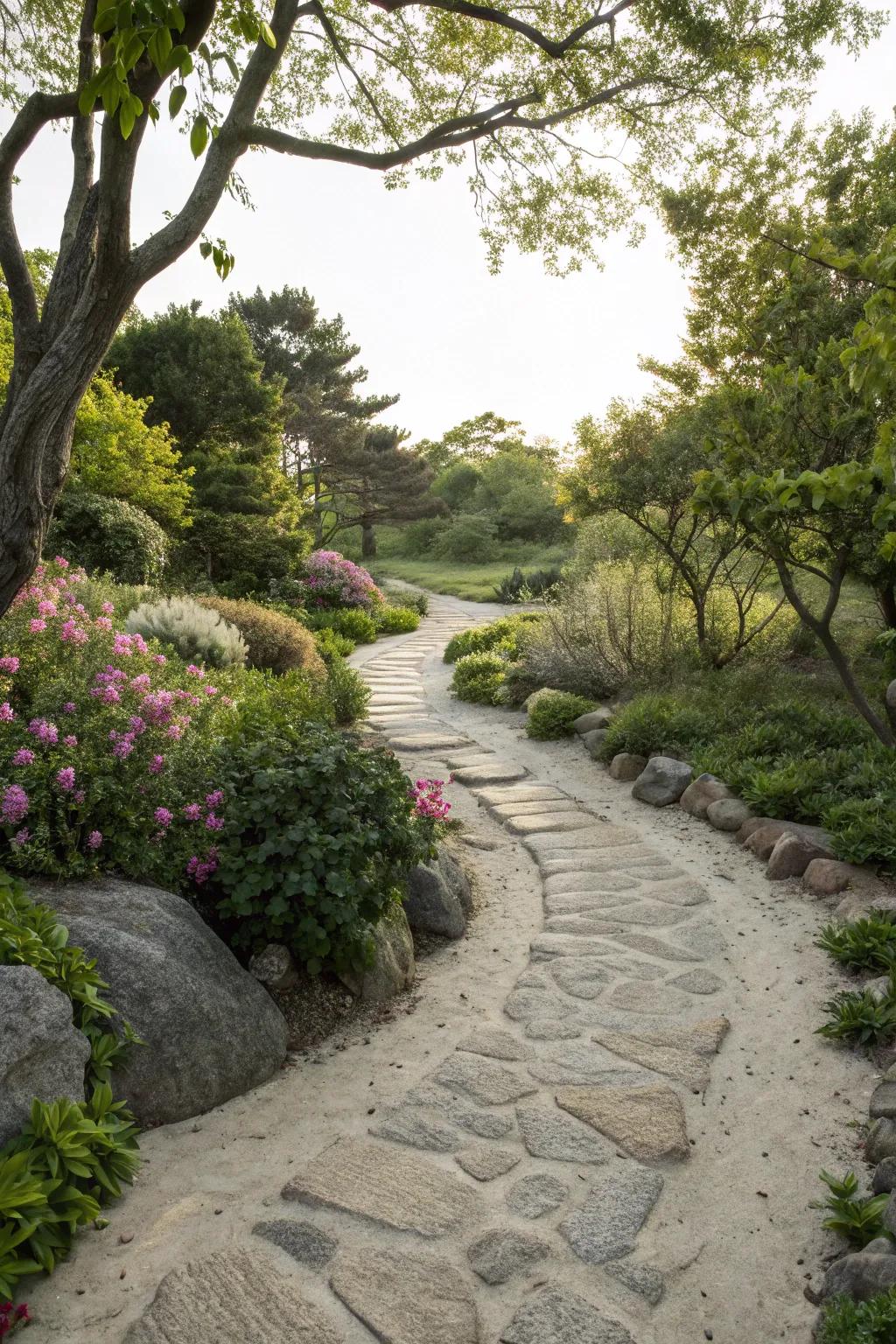
A sand and stone combination allows for flexible design and easy repairs. This method has been a lifesaver in my garden for creating natural-looking paths that adapt to the landscape.
May just do the trick:
- Decorative Garden Stones: Enhance your garden paths with decorative stones for a natural, elegant look. Easy to install.
- Fine Landscaping Sand: Create seamless pathways using fine landscaping sand for a smooth, appealing finish. Easy maintenance.
- Garden Pathway Edging: Define your walkways with garden pathway edging for a crisp, polished appearance. Simple to install.
8. Enchanting Log Rounds
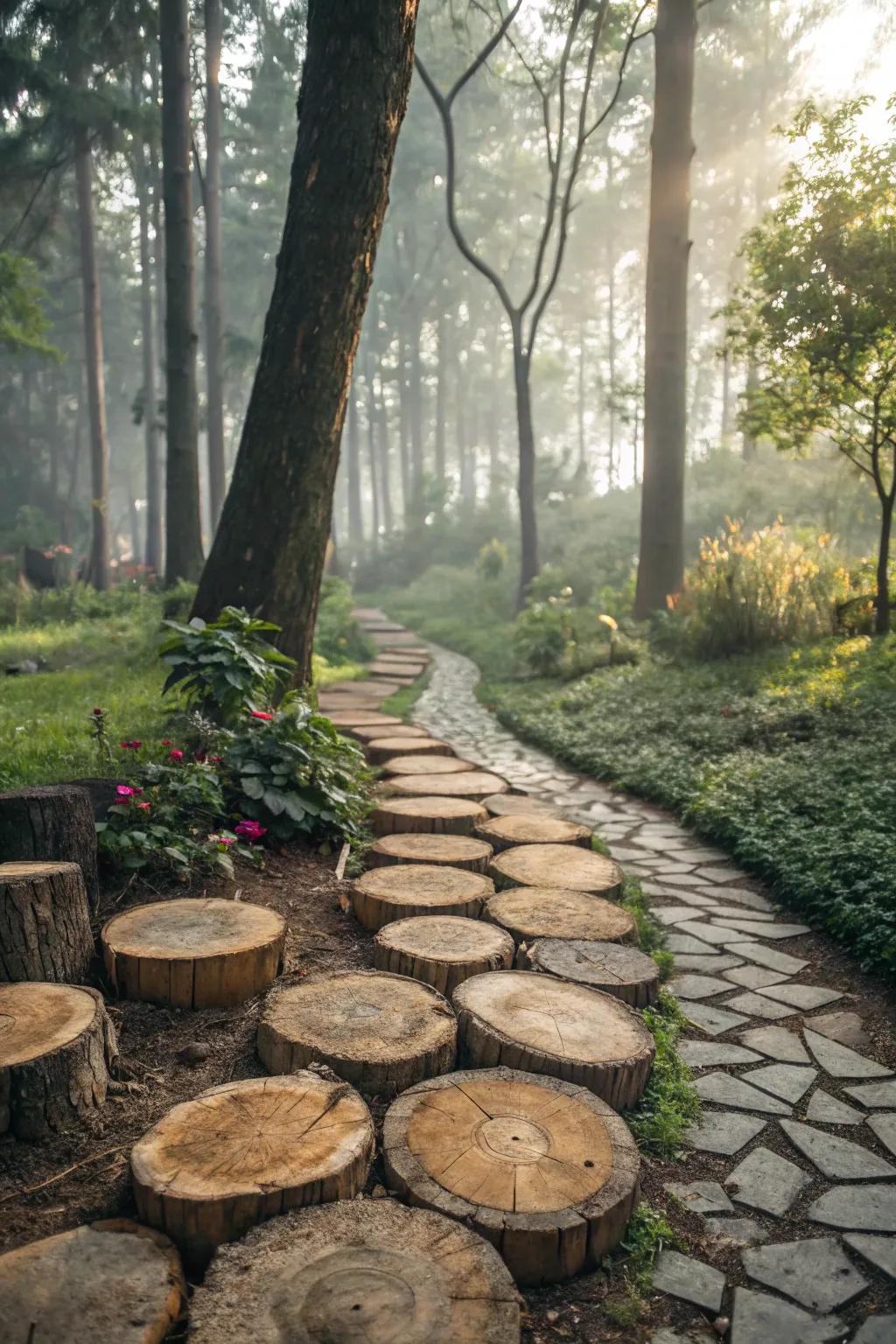
Use log rounds cut from felled trees to create a charming, rustic path. They add a whimsical touch to my garden, making each step feel like a journey through an enchanted forest.
A few choices to try:
- Garden Log Stepping Stones: Transform your garden with log stepping stones, adding rustic charm to every step.
- Wood Preservative Sealant: Protect your log rounds with sealant for long-lasting beauty and durability.
- Anti-Slip Matting for Paths: Enhance safety on your log path with discreet anti-slip matting underneath.
9. Natural Integration with Trees

Design paths that integrate with existing trees for a harmonious blend with nature. In my yard, pathways wind around trees, creating a sense of unity and respect for the natural world.
Check if these fit your needs:
- Permeable Pavers: Enhance your pathways with eco-friendly pavers that blend seamlessly with natural landscapes.
- Tree-Friendly Landscape Lighting: Illuminate your path while respecting tree growth with these flexible fixtures.
- Organic Mulch: Protect tree roots and define pathways with this natural, eco-friendly mulch.
10. DIY Gravel Pathway
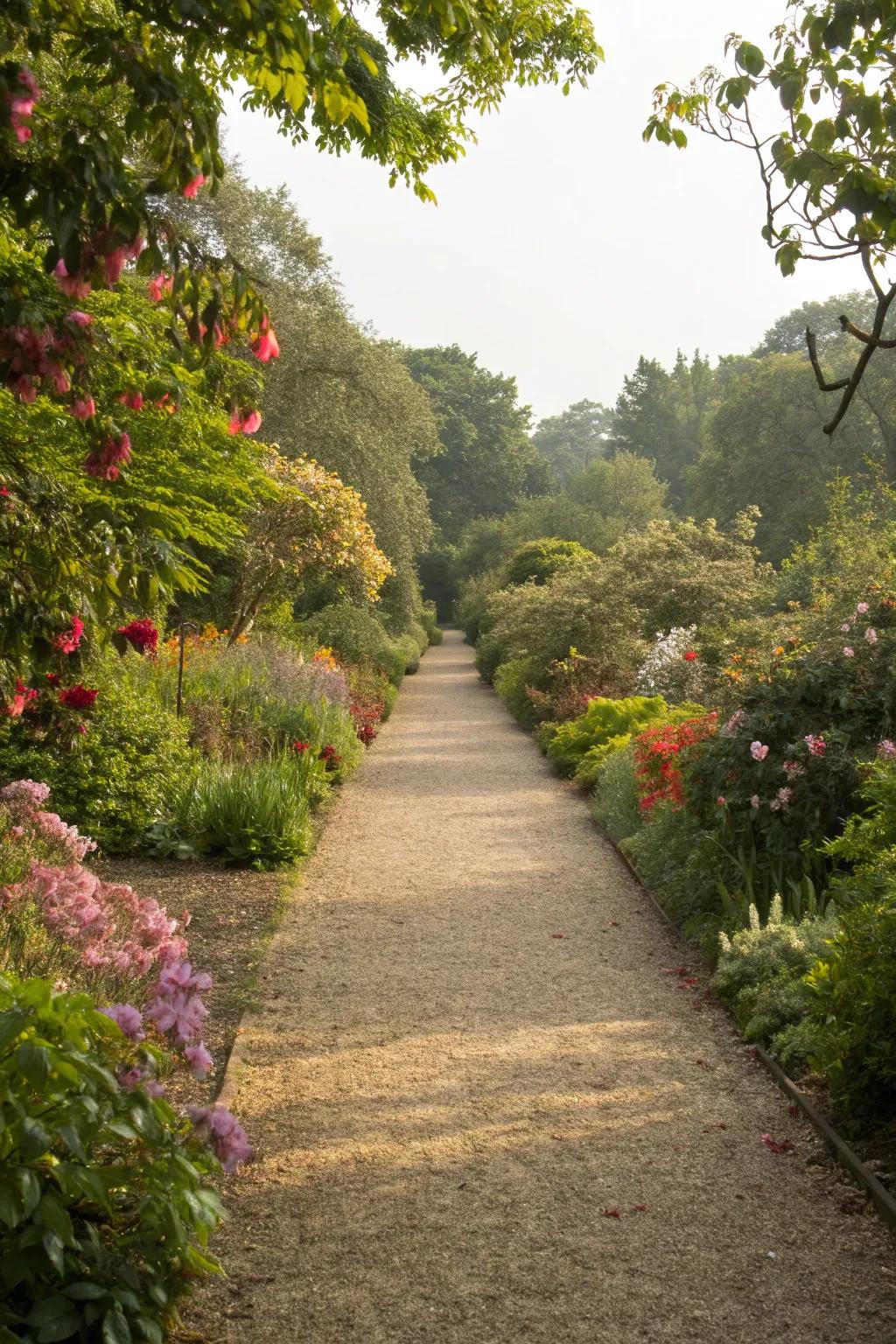
A gravel path is a DIY-friendly option that offers flexibility in design and is easy to maintain. I love the crunch of gravel underfoot and how it naturally directs visitors through my garden.
These products might help:
- Garden Pathway Gravel: Enhance your garden with this versatile gravel, perfect for creating a stunning, natural pathway.
- Landscape Edging Kit: Define your pathway beautifully with durable landscape edging, easy to install and maintain.
- Garden Weed Barrier Fabric: Prevent weeds effortlessly under your gravel path with this durable and easy-to-lay fabric.
11. Welcoming Entrances
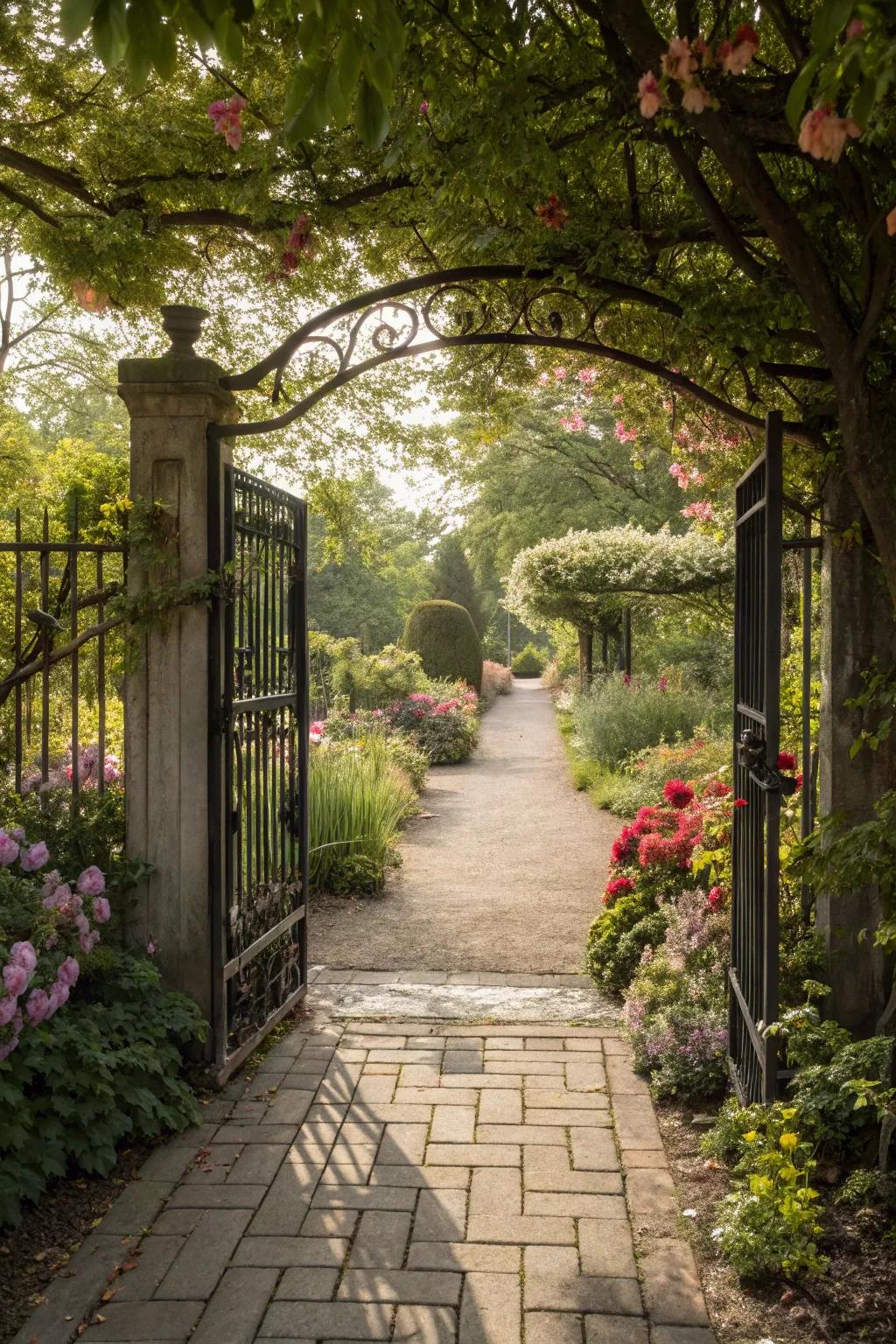
Create an inviting entrance pathway leading to your home’s entrance or garden gate. In my garden, a welcoming path sets the tone for guests, hinting at the beauty and tranquility beyond.
These products might be useful:
- Outdoor Pathway Lighting: Illuminate your entrance with stylish pathway lights, creating a warm and inviting atmosphere.
- Decorative Garden Arch: Enhance your garden entrance with a beautiful archway, adding charm and elegance to your pathway.
- Eco-Friendly Stone Pavers: Create a stunning walkway with durable stone pavers, offering both beauty and eco-friendliness.
12. Inviting Pebble Patterns

Design pebble mosaics for a truly unique walkway that doubles as art. In my garden, these mosaics add a playful touch, sparking conversation and admiration.
Possibly helpful picks:
- Decorative Garden Pebbles: Create stunning pebble mosaics in your garden to impress guests and enhance natural beauty.
- Outdoor Mosaic Kit: Transform your walkway with a complete mosaic kit, perfect for creative and custom designs.
- Landscape Cement Mix: Ensure durable and stable walkways by using high-quality cement mix for your pebble patterns.
13. Eco-Friendly Pallet Paths
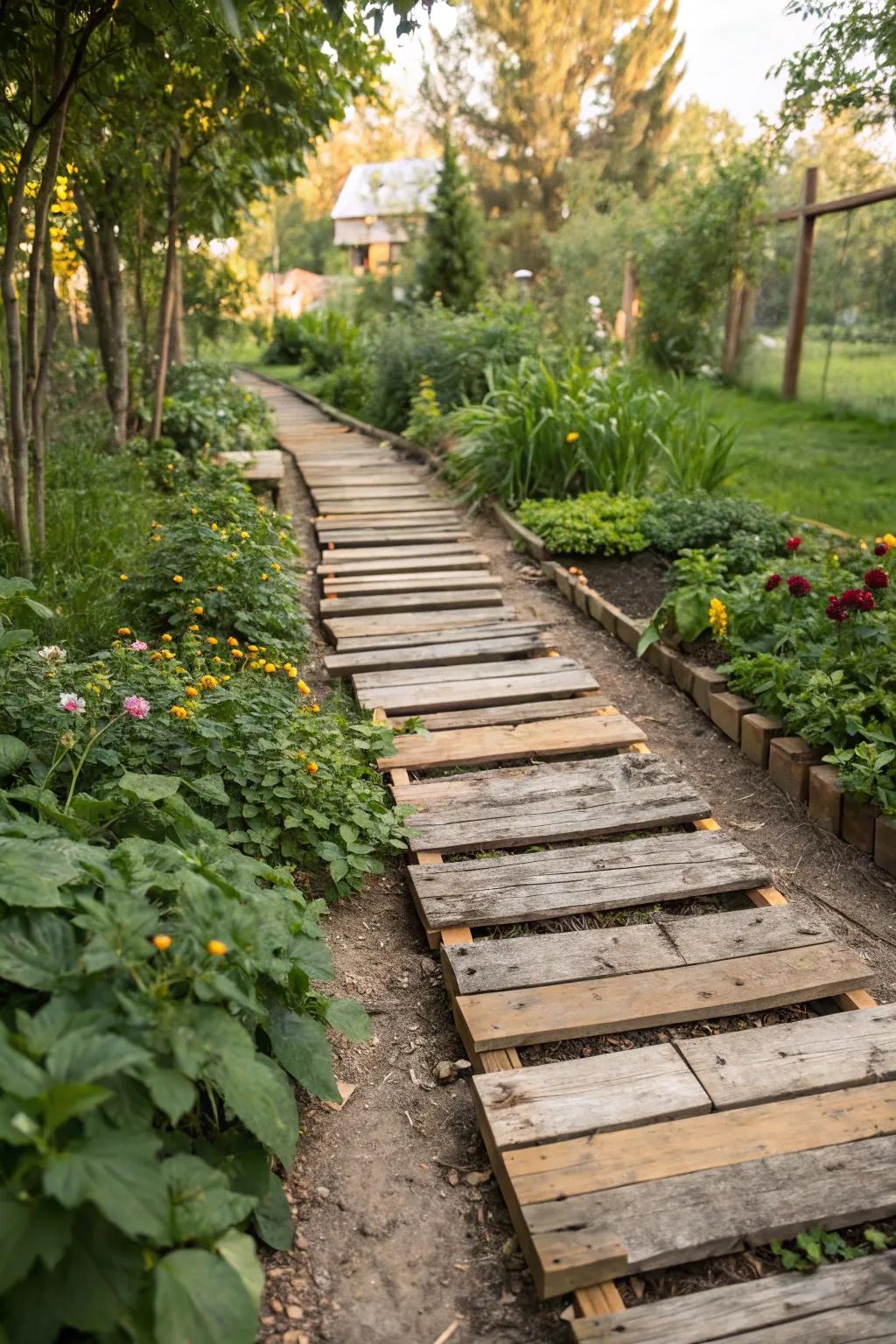
Reclaimed wooden pallets create an eco-friendly path with a rustic vibe. I love how pallets bring sustainability and style together in my outdoor projects.
Consider these options:
- Outdoor Wood Sealer: Protect your pallet path with this sealer, enhancing durability and water resistance effortlessly.
- Garden Weed Barrier Fabric: Prevent weeds from invading your path with this durable weed barrier fabric.
- Reclaimed Wooden Pallets: Create an eco-friendly path using these reclaimed pallets for a rustic outdoor space.
14. Rustic Wood Wonders
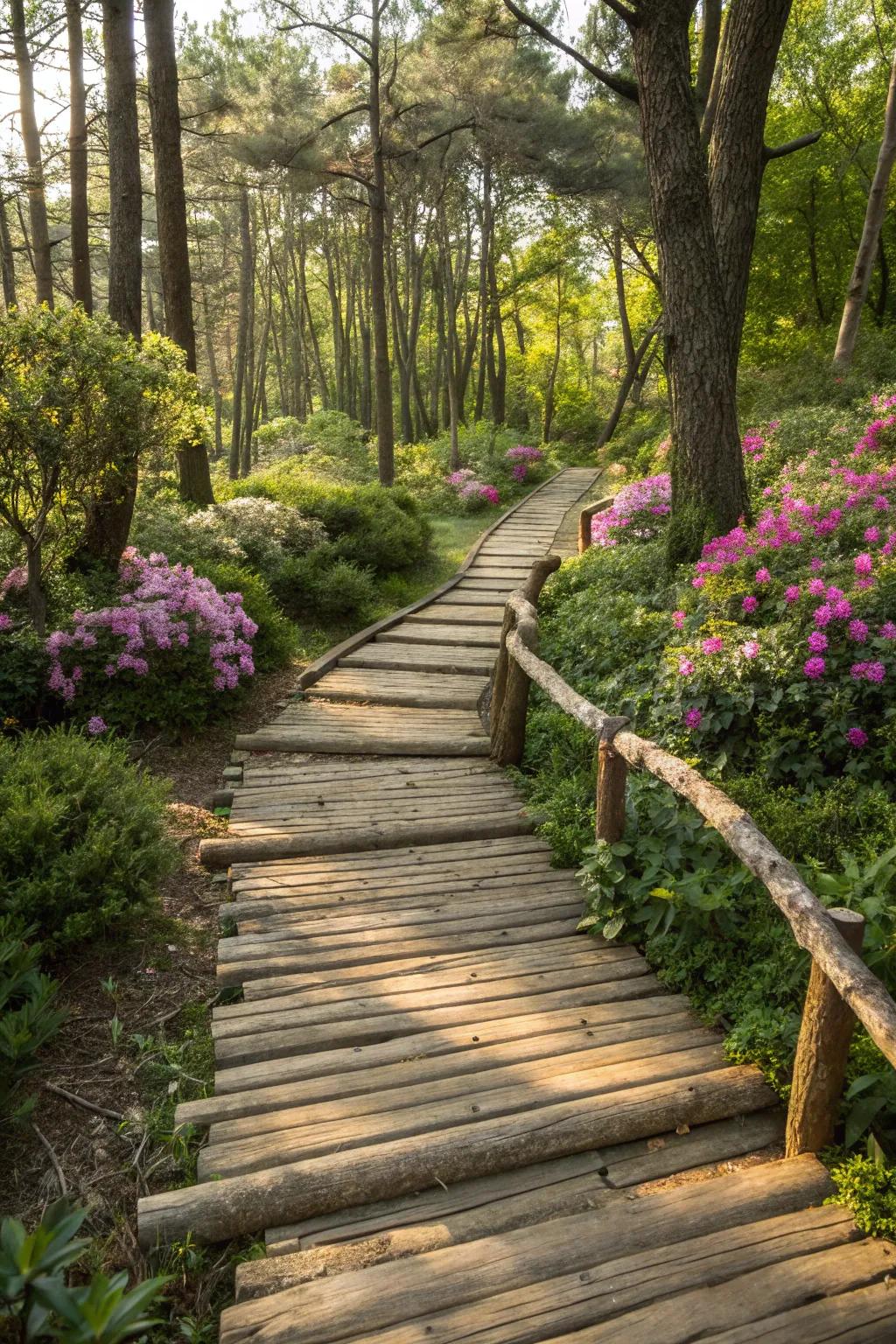
Using wooden planks or logs for a walkway gives a rustic charm that complements any natural setting. I’ve found wood paths to be wonderfully inviting, adding warmth and character to my backyard.
Check these products out:
- Outdoor Wooden Pathway Planks: Enhance your garden’s charm with these easily installable wooden planks for a rustic walkway.
- Wooden Log Stepping Stones: Create a natural atmosphere with these versatile wooden log stepping stones for your garden path.
- Natural Wood Garden Edging: Define your pathway with this durable wood garden edging, adding structure and style effortlessly.
15. Curved Pathways
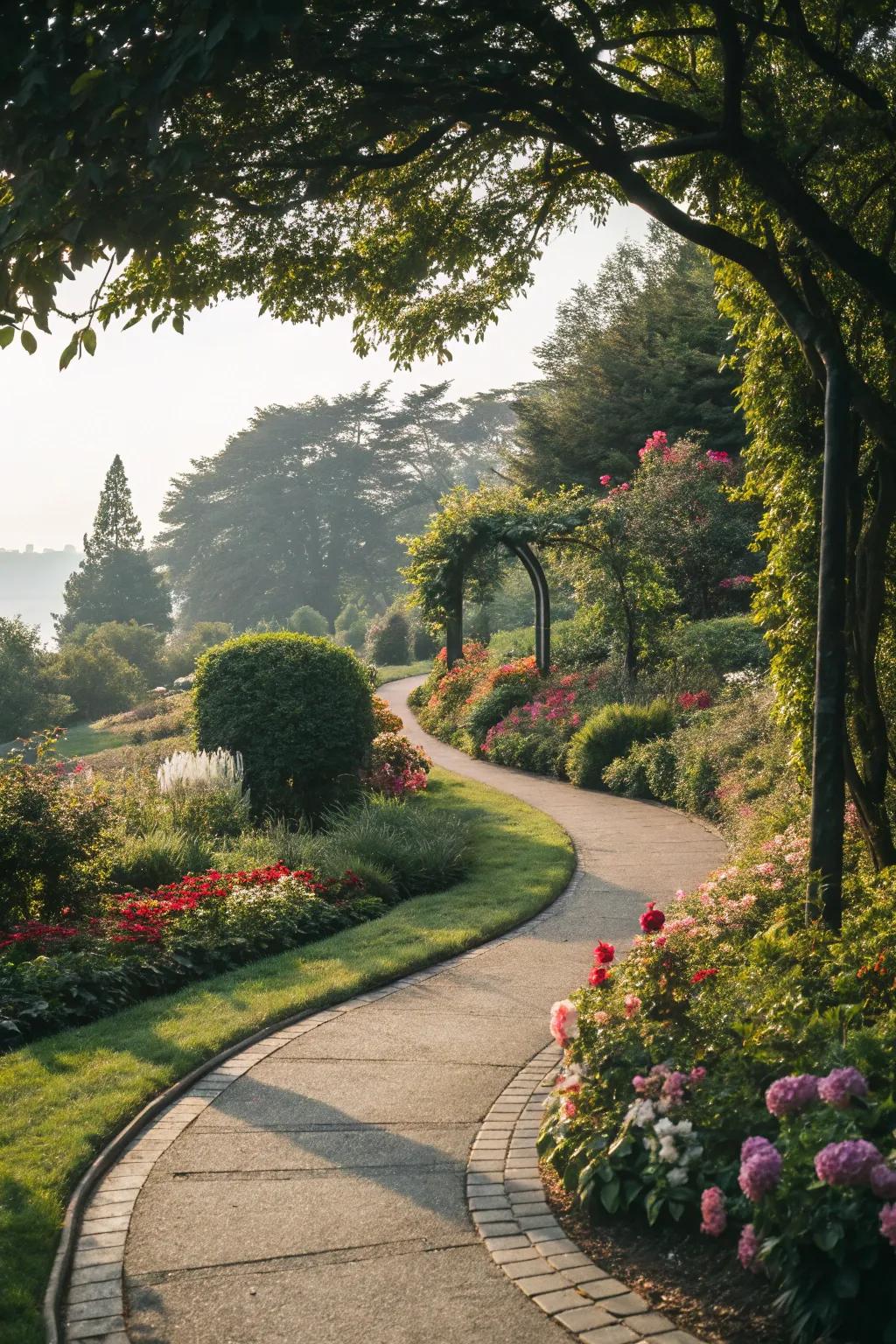
Designing curved paths adds a natural flow that feels more organic and inviting. In my garden, curves lead to hidden nooks, encouraging exploration and discovery.
You might give these a try:
- Garden Pathway Lighting: Illuminate your curved paths with elegant lighting, enhancing beauty and safety for evening strolls.
- Decorative Garden Arbor: Add charm to your garden paths with a stylish arbor, creating inviting entrances to hidden nooks.
- Flexible Garden Edging: Define your curved pathways with versatile edging, effortlessly creating smooth and flowing lines.
16. Raised Boardwalk Style
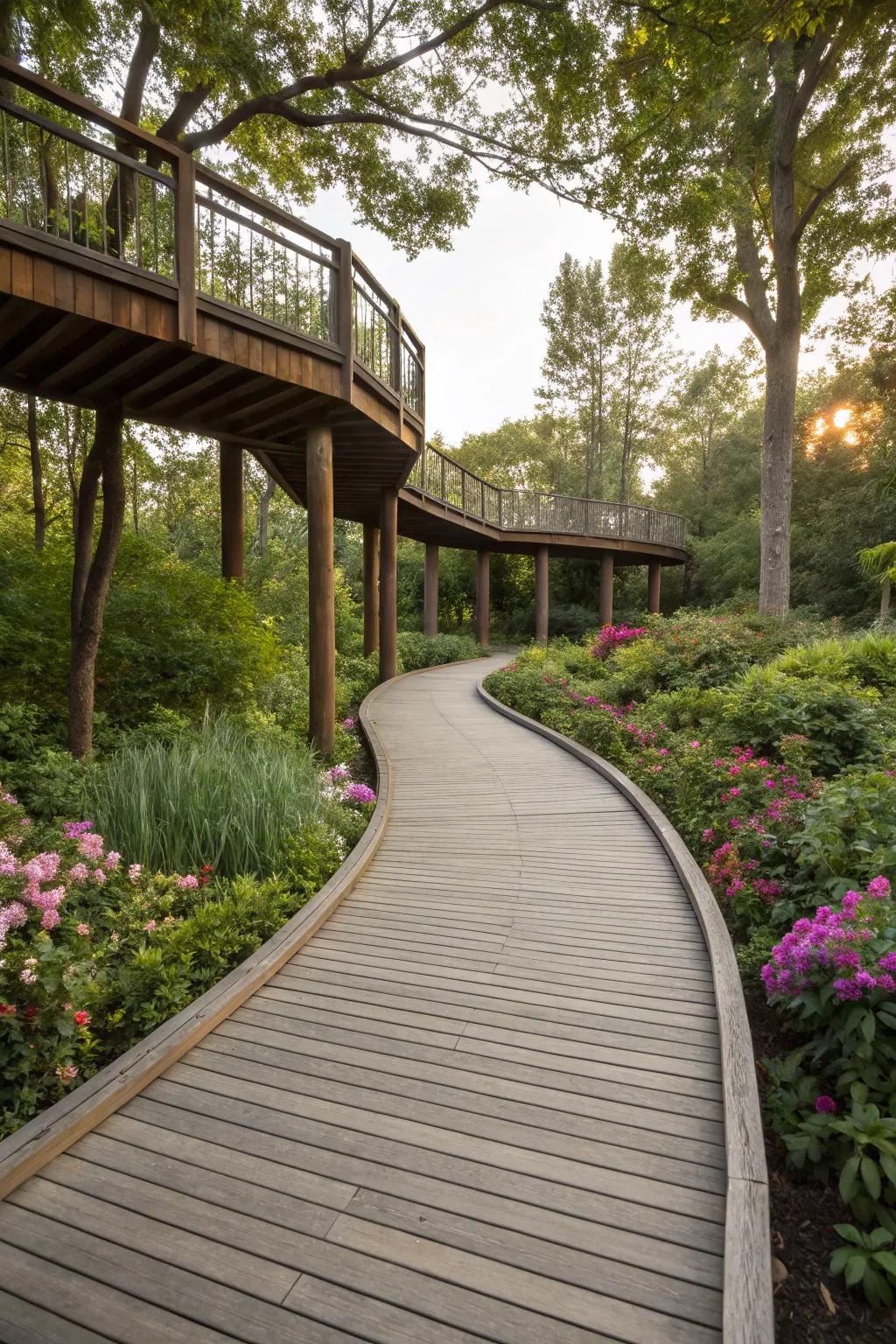
A raised wooden boardwalk is perfect for navigating over damp areas while adding a unique architectural element. I love how it elevates the experience, offering a different perspective of the garden.
A few relevant products:
- Pressure Treated Wood Decking Boards: Enhance your garden’s beauty with durable, weather-resistant wooden decking boards for your boardwalk.
- Outdoor Decking Screws: Secure your raised boardwalk with robust, rust-resistant screws for long-lasting durability.
- Wood Stain and Sealer: Protect and beautify your boardwalk with high-quality wood stain and sealer for lasting elegance.
17. Whimsical Tumbled Glass
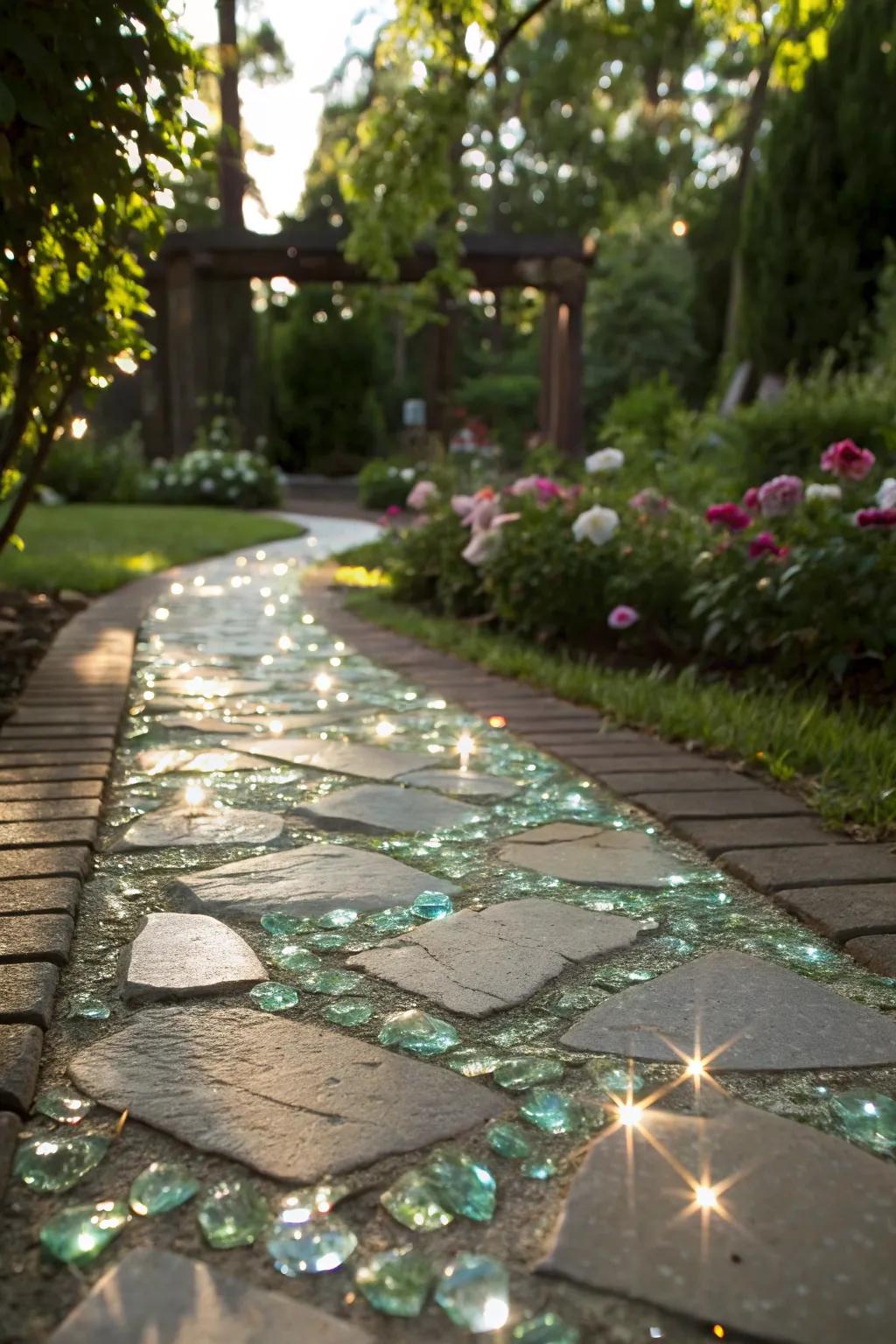
Consider using tumbled glass for a sparkling, whimsical walkway. In my garden, the glass catches the light, creating a magical atmosphere that feels straight out of a fairy tale.
Give these a look:
- Colorful Tumbled Glass Pieces: Transform your garden path with vibrant tumbled glass for a magical, fairy-tale ambiance.
- Outdoor Solar Pathway Lights: Enhance your walkway’s sparkle at night with energy-efficient solar lights for magical evenings.
- Garden Edging Stones: Define your magical pathway with durable edging stones for a polished, complete look.
18. Lush Garden Integration

Integrating a walkway with a vibrant garden allows plants to spill over, softening the edges and creating a lush, immersive experience. In my garden, the overgrown look is intentional, inviting guests to lose themselves in nature.
Explore these options:
- Garden Arch Trellis: Enhance your garden’s charm with an elegant arch trellis for climbing plants and lush greenery.
- Flowering Vine Seeds: Add vibrant colors to your garden walkway by planting beautiful flowering vine seeds today.
- Solar Pathway Lights: Illuminate your garden path with eco-friendly solar lights, enhancing its beauty at night.
19. Enchanting Lighting
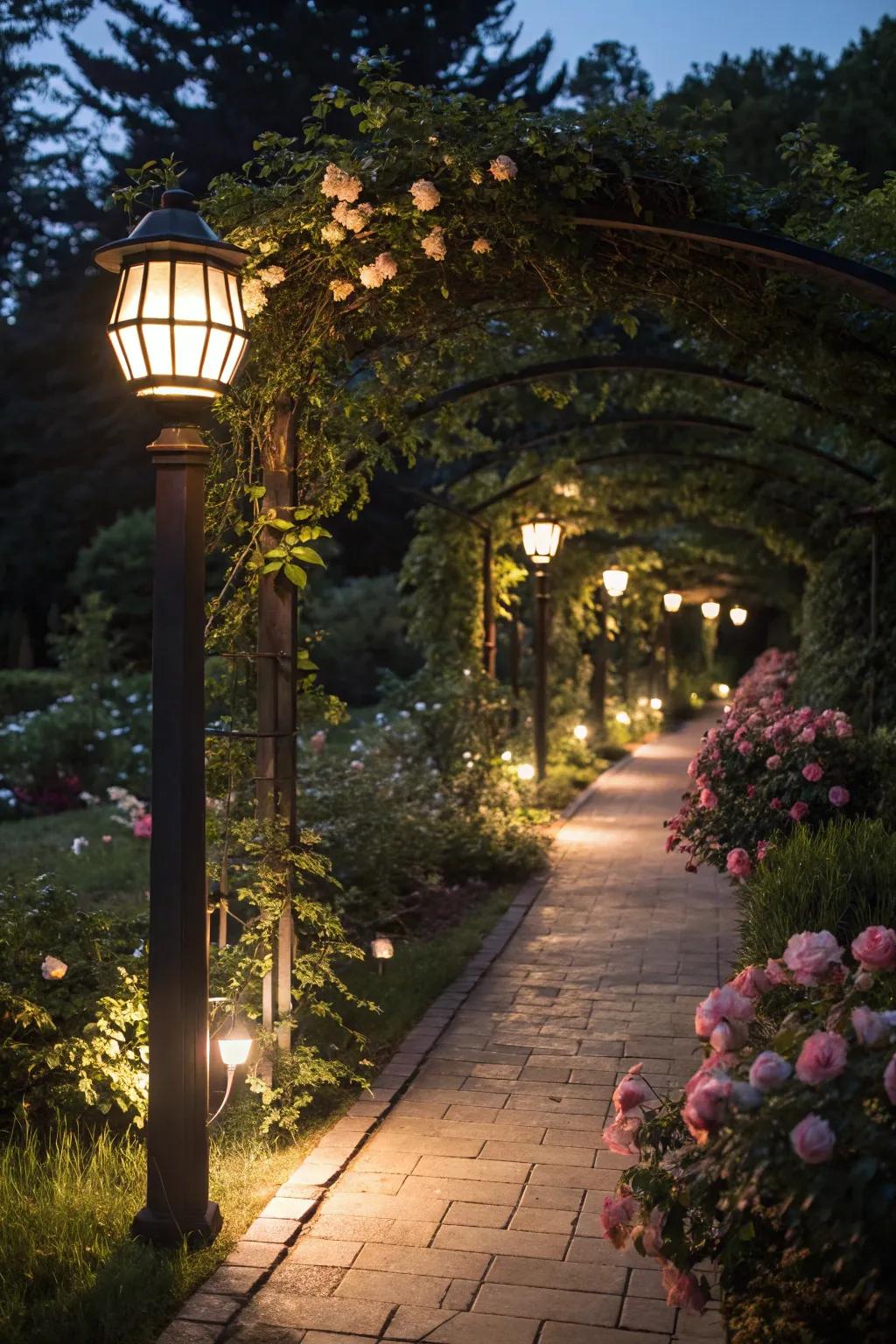
Incorporate lighting elements to transform your walkway into a magical experience at night. I’ve installed solar lights along my paths, which cast a soft glow, making evening strolls enchanting.
A few helpful options:
- Solar Pathway Lights: Illuminate your garden with ease and create a charming ambiance using efficient solar pathway lights.
- LED Garden Lanterns: Enhance evening strolls with elegant LED garden lanterns, perfect for casting a warm glow.
- Motion Sensor Bollard Lights: Add convenience and security to your walkway with sleek motion sensor bollard lights.
